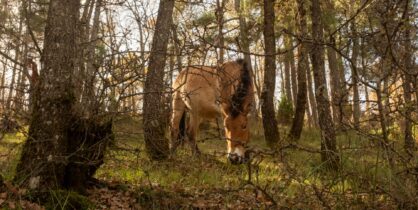Rewilding Starts with People
The revival of ancient animals benefits local communities and biodiversity in Spain.
For the first time in thousands of years, a herd of wild horses wanders through the forests near the source of the mighty Tagus River in Spain. The Przewalski’s horses gaining a hoofhold in the region are part of a rewilding initiative, but they are no strangers to the local ecosystem. Cave etchings hewn into the walls of the nearby Cueva de Casares show they were observed by our ancestors here some 14,000 years ago, along with giant rhinos, hyenas, cave bears and aurochs.
All these animals disappeared from the area over time, taking with them their natural interactions with the local forests and pastures. Human activities such as agriculture, which shaped local ecosystems in the absence of these prehistoric mammals, have also waned in recent years due to the rural exoduses of the 20th century. The return of the wild horse to this far-flung corner of Castilla-La Mancha, firmly in the territory of España vacía, or ‘Empty Spain,’ serves both an environmental and social purpose.
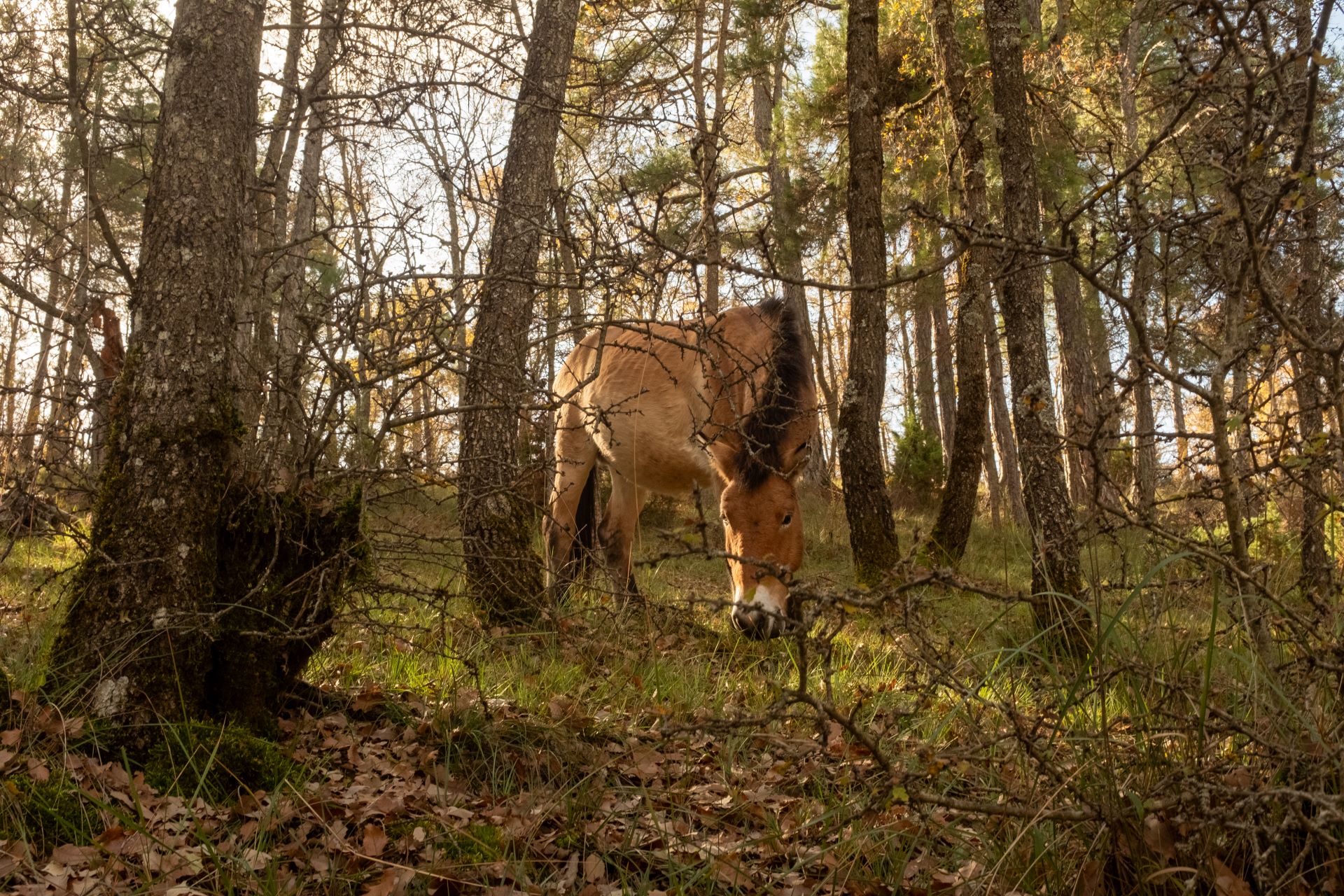
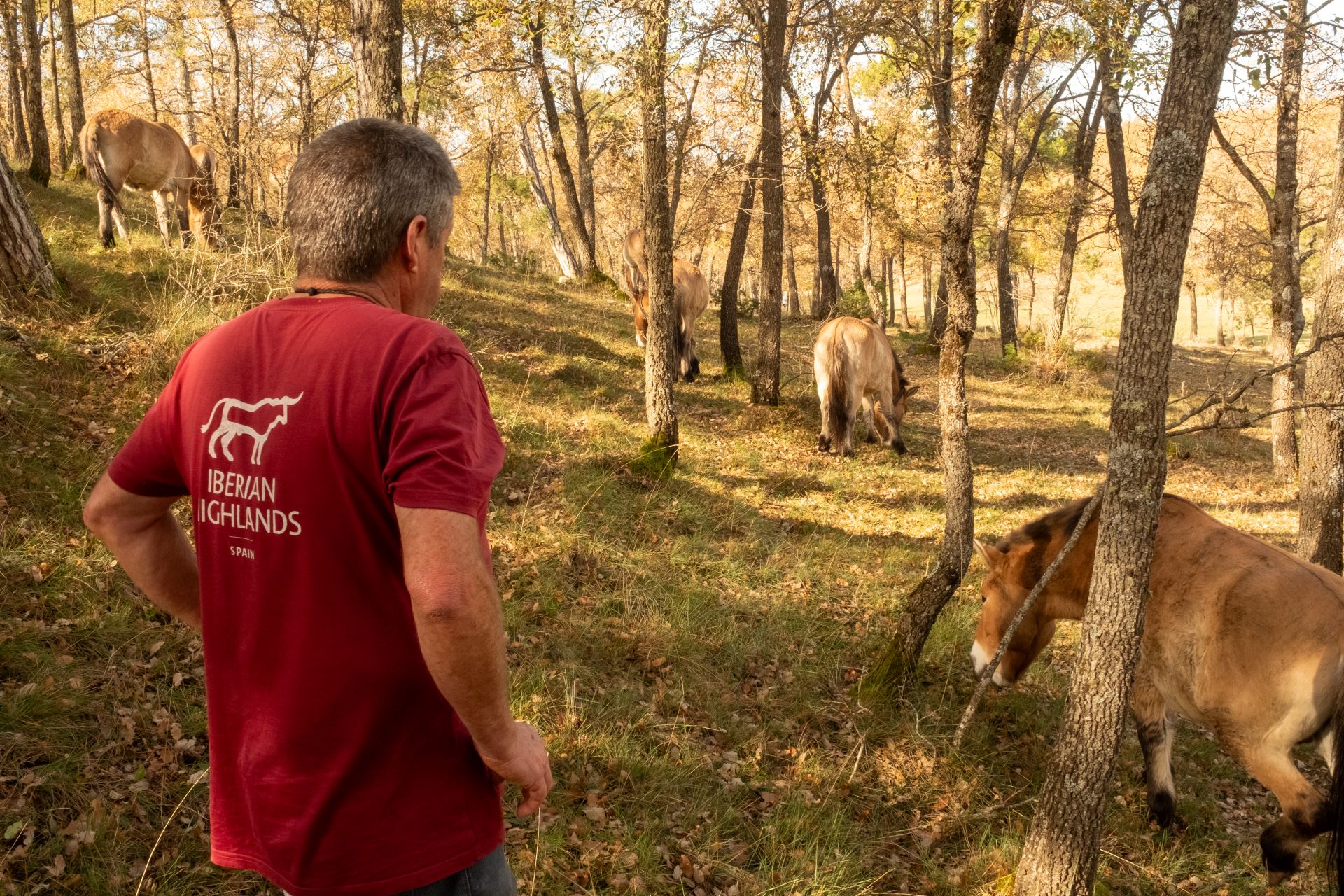
Horsing around
The horses move slowly through undergrowth under the expert eye of Pablo Villa who is from the nearby village of Villanueva de Alcorón. “It’s an incredible sight,” Villa, who is universally known by his nickname ‘Potro’ (which, fittingly, translates to ‘foal’ in English), tells REVOLVE. He points to a verdant pasture on the edge of the forest, which, he says, was dense with hip-high grass just a year-and-a-half ago when the horses first arrived. “Now it’s like a golf course, it’s a natural firebreak,” he adds.
The horses are capable of grazing on even the most stubborn and prickly vegetation that springs up between the trees. In doing so, they reduce the density of the forest biomass, facilitate biodiversity and mitigate the spread of wildfires. This is one of the key areas of focus for the team at Rewilding Spain, which is behind the initiative.
This is the wildest species of horse that still exists. The wild horse that once lived across Eurasia disappeared bit by bit due to hunting and domestication.
Pablo Schapira, Team Leader, Rewilding Spain
A dog’s bark somewhere in the woods spooks the horses and sends them galloping into the trees, their thick ochre coats and signature black, mowhawk manes blending in with the autumn leaves and tree trunks. An incredible sight indeed, and one that appears to have leaped straight out of a cave painting.
The Przewalski’s horses were brought to the Alto Tajo natural park area in Castilla-La Mancha from breeding programs in Hungary and France. The programs are part of wider international efforts to bring the species back from the very brink of extinction, says Pablo Schapira, team leader for Rewilding Spain’s activities in the territory.
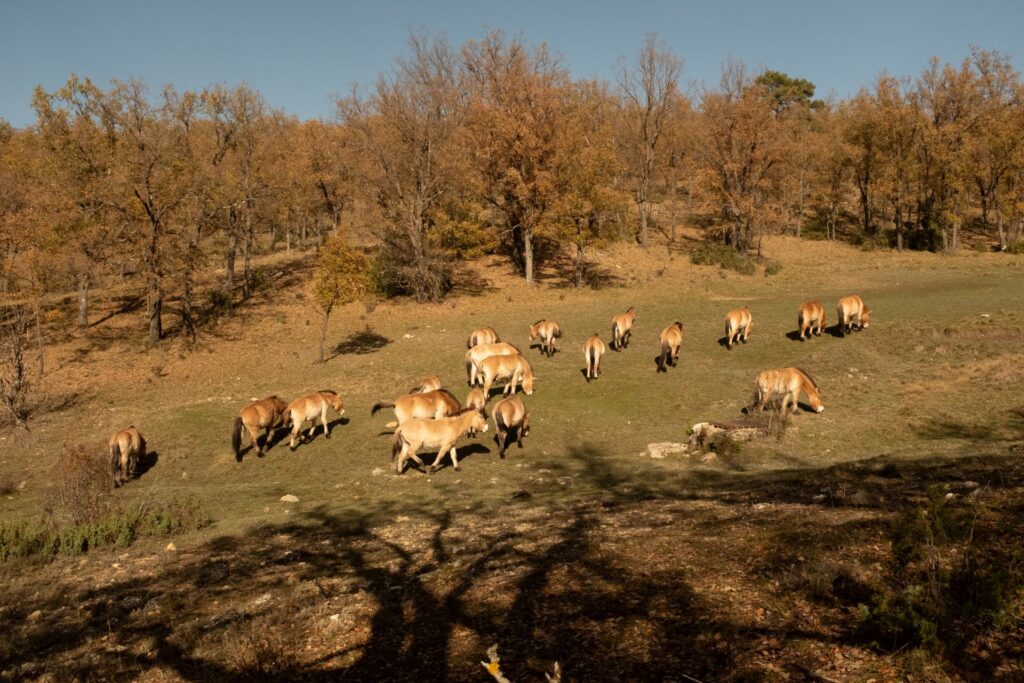
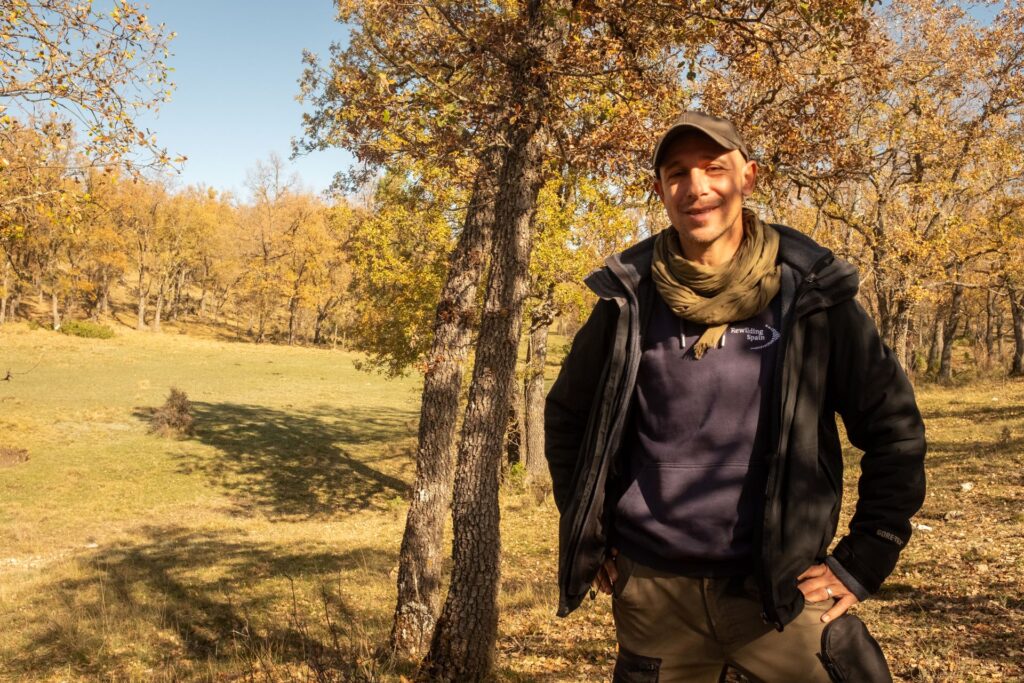
“This is the wildest species of horse that still exists. The wild horse that once lived across Eurasia disappeared bit by bit due to hunting and domestication,” he tells REVOLVE. He adds that the last wild Przewalski’s horses held out in remote areas of Mongolia but that, at one point, the population was reduced to just 12 animals surviving in captivity. From just a dozen horses, the population has grown to around 3,000 in the last 20 years thanks to recovery programs in Mongolia, Kazakhstan, Hungary, France, and now Spain.
“Firstly, we see how these animals play an ecological role by grazing the landscapes and opening spaces in the woods — they are like architects of the forest. Secondly, we are also helping in the conservation of an endangered species and, thirdly, we are seeing how they can create socioeconomic resources for the local area,” Schapira says.
Rewilding opportunities
The wild horse initiative has already drummed up income in the form of tourism, with domestic and international travellers coming to see the animals. This inevitably has a knock-on effect for local eateries and hotels across the province of Guadalajara, where they are based. The rewilding initiative in the Iberian Highlands has guaranteed financial backing for at least 20 years and the wild horses project alone has provided direct employment to three people from the nearby village of Villanueva de Alcorón, including Potro.
The mayor of Villanueva de Alcorón, Faustino Martínez, who doubles as the local ambulance driver, heaps praise on the initiative. “To have three jobs created in the village, for us that’s gold, it means there are three people, three families, living in Villanueva de Alcorón because of that.”
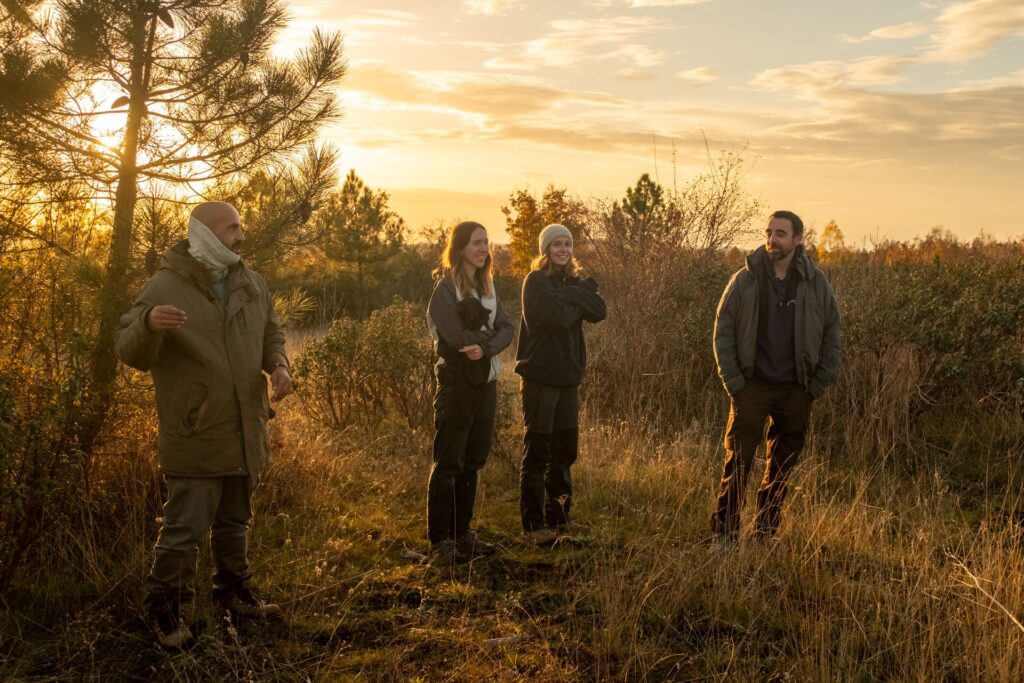

Rewilding Spain, part of the Rewilding Europe network, employs a total of 19 people in the region through its various initiatives, which, as well as the horses, includes the integration of wild cows genetically similar to the ancient and extinct aurochs, the reintroduction of the black vulture, and projects to preserve local forests through carbon credit schemes.
“The majority of our workers are from the local area, and those who are not have moved into the area to work,” Diego Rodríguez, rewilding manager at Rewilding Spain, tells REVOLVE within earshot of a herd of skittish wild cows near the village of Mazarete. “A lot of people are coming to see the horses and the cows, and the idea is to start building up a name for the area when it comes to ecotourism.”
His colleague, Rafael Vigil, is a local and has been able to make a living from the initiative. “Thanks to Rewilding Spain I’ve been able to dedicate to my time to something I love, which is to work outdoors in nature.”
Providing employment to local people is significant in this area of Castilla-La Mancha, which is often referred to as the Lapland of the South due to its frigid climate and uninhabited land. According to the Spanish government, the population density of the Alto Tajo averages out at just one person per km2, making it one of the least populated districts in the EU and, since 2001, the area has lost 43% of its population. Villanueva de Alcorón (pop. 140) and Mazarete (pop. 27) are both classed as suffering from “extreme depopulation.”
Building community
Contracting local people and working closely with communities rather than swooping into a territory to apply changes is key to the rewilding effort. Such is the case for the forest regeneration scheme, which is being piloted just outside the village of Vega del Codorno in the neighboring Cuenca province. Here, the town hall agreed to stop felling trees and clearing out dead wood from a 200-hectare expanse of forest in a deal that will see Rewilding Spain match the financial income it would have received from timber production — some 8,000 euros a year.
If you do something that isn’t valued, then you run risks. You can’t become exclusive and protectionist.
Rodrigo Molina, Mayor of Vega del Codorno
The expected result is one of natural revitalisation at no cost. Permitting trees to grow to their natural age and size and leaving dead wood to rot naturally into the ground increases biodiversity thanks to the establishment of microhabitats that are not found in managed forest, Basilio Rodríguez, Rewilding Spain’s head of socioeconomic development in the region, tells REVOLVE.

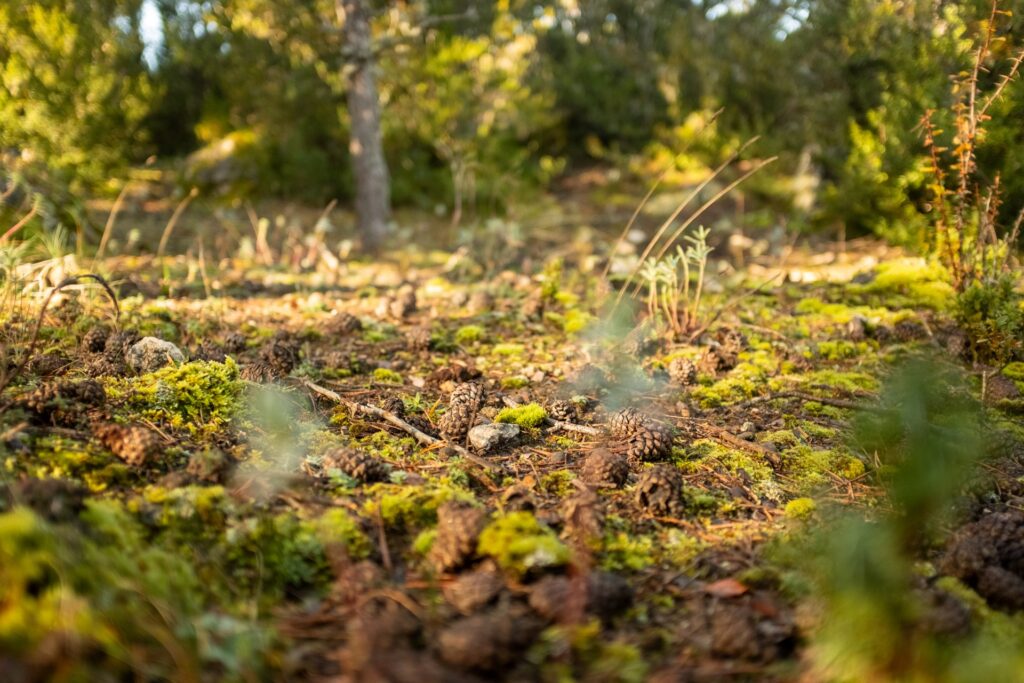
“In this area the forests are usually managed and, when it comes to felling timber in these forests the oldest trees you will find will be around 100 or 120-years-old, 150 at most,” he says. “Many of these species can live for 400 or 500 years, so we have no representation of this mature period.”
For now, Rewilding Spain is dipping into its own pockets to pay the compensation but, in the future, it hopes to fund it with carbon credits generated by the restoration of the forest. Either way, these funds can be reinvested into the local area. Plans to create a nature trail from the forest reserve to the nearby source of the river Cuervo, a popular tourist spot, could add further value to this plan.
“It’s a tourist attraction more than anything,” Rodrigo Molina, the mayor of Vega del Codorno, tells REVOLVE. “We’re going to construct the trail, and we hope that brings more people to the establishments in the area. Here there are quite a few establishments that make a living off tourism.”
Molina emphasizes the importance of working alongside the interests of the local inhabitants, pointing out that in this case people can still access and use the land freely to graze livestock, hunt and collect mushrooms. “If you do something that isn’t valued, then you run risks,” he adds. “You can’t become exclusive and protectionist, because you’ll create friction with the people, and here we’ve not had anybody come out against the plans.”
By placing rewilding efforts in the hands of rural communities, initiatives like those being piloted by Rewilding Spain tap into crucial local knowledge. These same communities then act as powerful spokespeople when an initiative bears fruit. This relationship is key to opening the door for the expansion of rewilding initiatives across other areas of rural Spain, and beyond.
